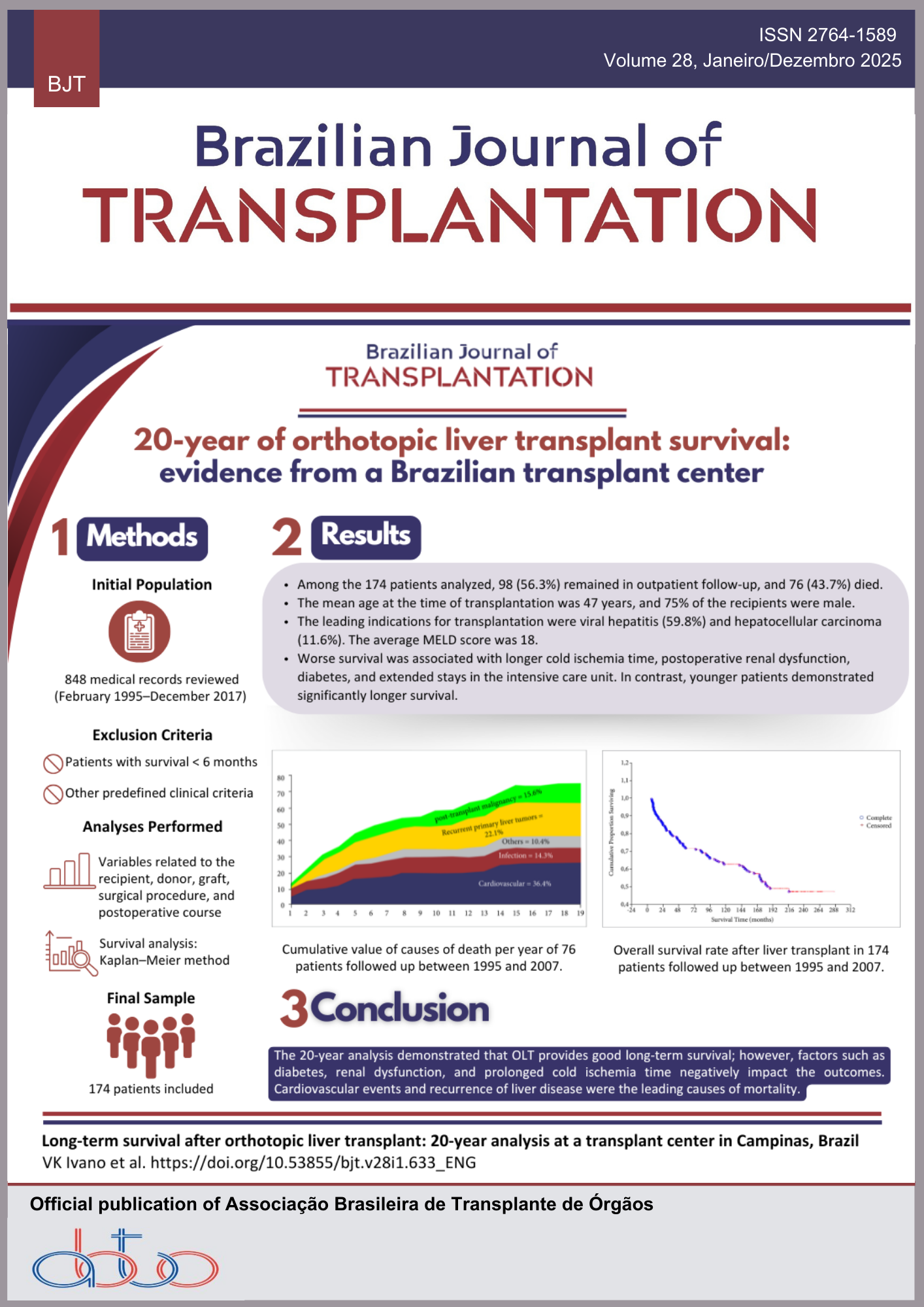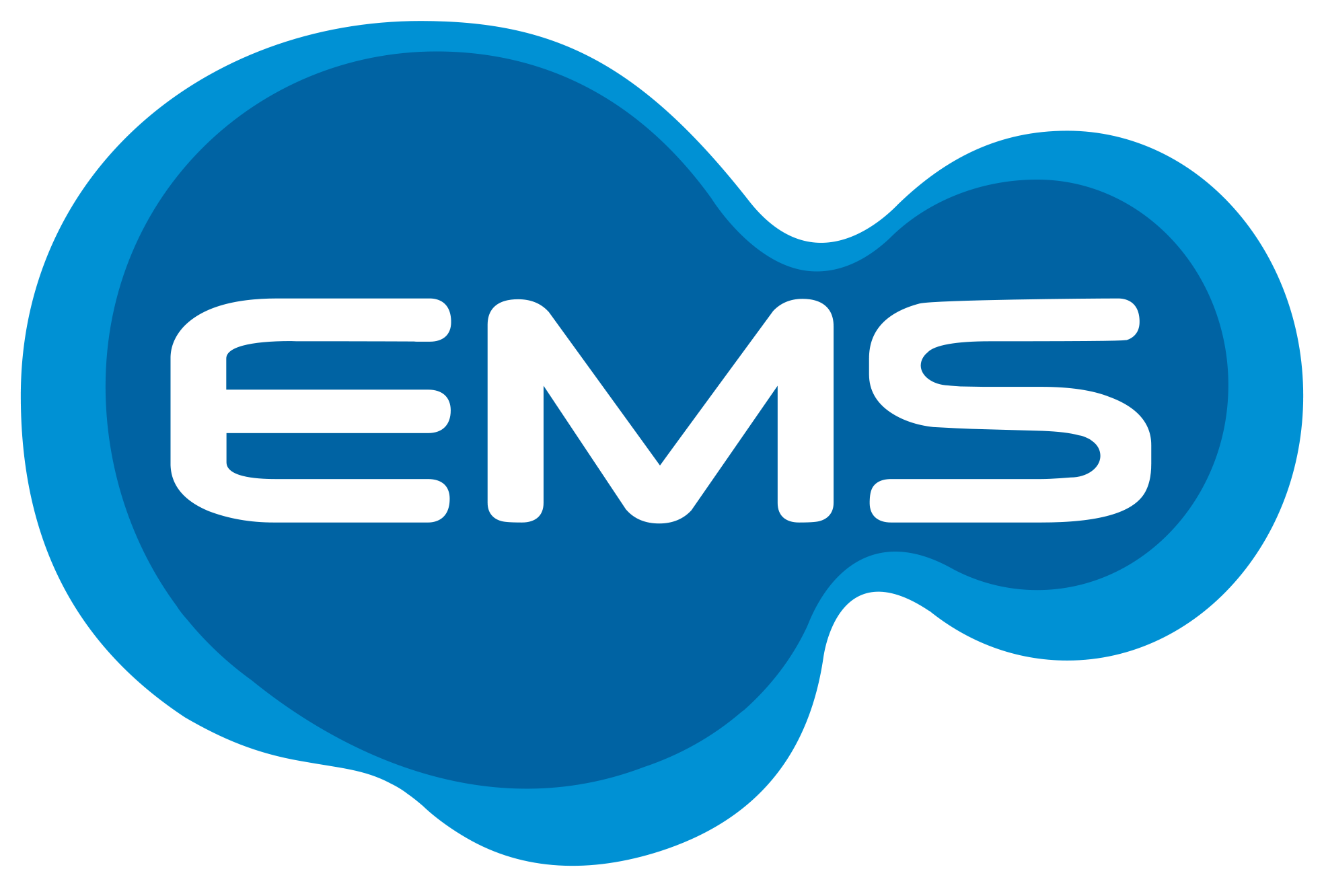Epidemiological Profile of Donation Candidates at a Pediatric Heart Transplant Reference Center
Keywords:
Heart Transplantation, Organ Transplantation, Tissue Donors, Descriptive EpidemiologyAbstract
Introduction: Heart transplantation is the standard treatment for end-stage heart disease. This therapy is limited by factors related to both the donor and the recipient, in addition to peculiarities inherent to its implementation in the pediatric population. Due to the disparity between organ supply and demand, heart transplant waiting list mortality is high in this age group, ranging from 17 to 30% worldwide. Even so, around 40% of listed hearts are not used worldwide. High refusal rates are due to the lack of uniformity in assessment, as well as in the acceptance and refusal of organs in pediatric heart transplantation. It is known that donor and recipient factors interact with each other in a complex way, requiring a joint analysis to determine whether the organ available at that time is suitable for the patient in question. Objectives: To identify the epidemiological profile of candidates for heart donation offered to a pediatric heart transplant center in southern Brazil. Methods: This is an observational, descriptive, and retrospective study. The sample consisted of medical records from potential donors offered from January 2021 to December 2023. Results: There were 205 organs offered during this period, eight of which were excluded from the analysis due to a lack of data. The average age of the patients was 19.5 years and 67.5% of them were male. Chest radiography or tomography was not available in 38.6% of cases. A total of 56.3% of cases had an electrocardiogram available, but 45% of them were abnormal, and 29.4% of patients had no echocardiogram. Of the echocardiograms, 22.3% showed dysfunction. A total of 88.8% of patients were receiving vasoactive drugs and 61.9% had an active infection. Of the available organs, 92.9% were refused. Conclusion: The refusal rate was higher than the global estimate, which may result from the lack of relevant donor-related information at the time of the offer. Moreover, there is a prevalence of data suggesting some degree of cardiac dysfunction in potential donors.
Downloads
References
Reinhardt Z. Paediatric heart transplantation: an update. Arch Dis Child, 2019; 104(12): 1216-22. https://doi.org/10.1136/archdischild-2018-315682
Azeka E, Jatene MB, Jatene IB, Horowitz ESK, Branco KC, Souza Neto JD, et al. I Diretriz Brasileira de Insuficiência Cardíaca e Transplante Cardíaco, no Feto, na Criança e em Adultos com Cardiopatia Congênita, da Sociedade Brasileira de Cardiologia. Arq Bras Cardiol, 2014; 103(6 Suppl 2): 1-126. https://doi.org/10.5935/abc.2014S005
Barnes A, Gibson W. Pediatric heart transplant. Semin Pediatr Surg, 2021; 30(2): 151039. https://doi.org/10.1016/j.sempedsurg.2021.151039
Conway J, Ballweg JA, Fenton M, Kindel S, Chrisant M, Weintraub RG, et al. Review of the impact of donor characteristics on pediatric heart transplant outcomes. Pediatr Transplant, 2020; 24(3). https://doi.org/10.1111/petr.13680
Kirk R, Dipchand AI, Davies RR, Miera O, Chapman G, Conway J, et al. ISHLT consensus statement on donor organ acceptability and management in pediatric heart transplantation. J Hear Lung Transpl, 2020; 39(4): 331-41. https://doi.org/10.1016/j.healun.2020.01.1345
Godown J, Kirk R, Joong A, Lal AK, McCulloch M, Peng DM, et al. Variability in donor selection among pediatric heart transplant providers: results from an international survey. Pediatr Transpl, 2019; 23(5): 1 12. https://doi.org/10.1111/petr.13417
Bonatto MG, Marinho LLE, Mangini MHLTS, Seguro LFBC, Ávila MS, Braga FGM, et al. Avaliação de uma coorte de transplante cardíaco por escore relacionado ao doador. Rev Soc Cardiol Estado São Paulo, 2019; 29 Suppl (3): 287-90. Avaialble at https://docs.bvsalud.org/biblioref/2021/09/1023063/avaliacao-de-uma-coorte-de-transplante-cardiaco-por-escore-rel_nbOyICp.pdf
Gossett JG, Amdani S, Khulbey S, Punnoose AR, Rosenthal DN, Smith J, et al. Review of interactions between high-risk pediatric heart transplant recipients and marginal donors including utilization of risk score models. Pediatr Transpl, 2020; 24(3): 1-9. https://doi.org/10.1111/petr.13665
Westbrook TC, Morales DLS, Khan MS, Bryant R, Castleberry C, Chin C, et al. Interaction of older donor age and survival after weight-matched pediatric heart transplantation. J Hear Lung Transpl, 2017; 36(5): 554-8. https://doi.org/10.1016/j.healun.2016.11.009
Bacal F, Marcondes-Braga FG, Rohde LEP, Xavier Júnior JL, de Souza Brito F, Moura LZ, et al. 3ª Diretriz Brasileira de Transplante Cardíaco. Arq Bras Cardiol, 2018; 111(2): 230-89. https://doi.org/10.5935/abc.20180153
Ford MA, Almond CS, Gauvreau K, Piercey G, Blume ED, Smoot LB, et al. Association of graft ischemic time with survival after heart transplant among children in the United States. J Hear Lung Transpl, 2011; 30(11): 1244-9. https://doi.org/10.1016/j.healun.2011.05.001
Cheng A, Schumer EM, Trivedi JR, Van Berkel VH, Massey HT, Slaughter MS. Does donor cardiopulmonary resuscitation time affect heart transplantation outcomes and survival? Ann Thorac Surg, 2016; 102(3): 1-8. https://doi.org/10.1016/j.athoracsur.2016.02.034
Richmond ME, Easterwood R, Singh RK, Gilmore L, Beddows K, Zuckerman WA, et al. Low-dose donor dopamine is associated with a decreased risk of right heart failure in pediatric heart transplant recipients. Transplantation, 2016; 12: 1-6. https://doi.org/10.1097/TP.0000000000001059
Copeland H, Knezevic I, Baran DA, Rao V, Pham M, Gustafsson F, et al. Donor heart selection: evidence-based guidelines for providers. J Heart Lung Transplant, 2023; 42(1): 7-29. https://doi.org/10.1016/j.healun.2022.08.030
Galdino MJQ, Rodrigues AT, Scholze AR, Pissinati PSC, Barreto MFC, Haddad MCFL. Doações e transplantes cardíacos no estado do Paraná. Rev Gaucha Enferm, 2018; 39: e2017-0276. https://doi.org/10.1590/1983-1447.2018.2017-0276
Ziaziaris W, Chew HC, Dhital K, Hayward C, Pleass H, Macdonald P. Size and gender matching in heart transplantation – Optimizing donor utilization in an era of changing donor and recipient characteristics. Curr Transplant Rep, 2014; 1(4): 266-72. https://doi.org/10.1007/s40472-014-0032-7
Firoz A, Yanagida R, Hamad E, Kashem M, Toyoda Y. Impact of donor ventricular function on heart transplantation outcomes. Clin Transplant, 2023; 37(3): e14988. https://doi.org/10.1111/ctr.14988
Dorent R, Gandjbakhch E, Goéminne C, Ivanes F, Sebbag L, Bauer F, et al. Assessment of potential heart donors: a statement from the French heart transplant community. Arch Cardiovasc Dis, 2018; 111(2): 126-39. https://doi.org/10.1016/j.acvd.2017.12.001
Tatum R, Briasoulis A, Tchantchaleishvili V, Massey HT. Evaluation of donor heart for transplantation. Heart Fail Rev, 2022; 27(5): 1819-27. https://doi.org/10.1007/s10741-021-10178-7
Galeone A, Varnous S, Lebreton G, Barreda E, Hariri S, Pavie A, et al. Impact of cardiac arrest resuscitated donors on heart transplant recipients’ outcome. J Thorac Cardiovasc Surg, 2017; 153(3): 622-30. https://doi.org/10.1016/j.jtcvs.2016.10.079
Hammond ME, Zollinger C, Vidic A, Snow GL, Stehlik J, Alharethi RA, et al. Donor age, sex, and cause of death and their relationship to heart transplant recipient cardiac death. J Clin Med, 2023; 12(24): 7629-9. https://doi.org/10.3390/jcm12247629
Downloads
Published
How to Cite
Issue
Section
License
Copyright (c) 2025 Ana Laura Camargo Sturm, Bruno Hideo Saiki Silva

This work is licensed under a Creative Commons Attribution 4.0 International License.









